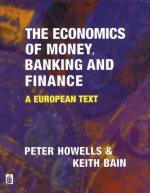Question
Read the following excerpt and then answer the questions that follow: When Mauricio Macri was elected president of Argentina in 2015, one of his first
Read the following excerpt and then answer the questions that follow:
When Mauricio Macri was elected president of Argentina in 2015, one of his first acts was to abolish capital controls that restricted buying and selling of the peso. The move symbolized Argentinas pivot back to open markets and liberal economic reforms under his rule. On September 1st, after weeks of market turmoil, Mr. Macri was forced to issue a decree re-imposing controls in an attempt to shore up the currency. From now on ordinary Argentines purchases of US dollars will be capped at $10,000 a month. Restrictions were imposed companies' ability to purchase dollars in the foreignexchange market and to pay dividends to investors abroad. Investors are habituated to financial fiascos in Argentina but, even so, the news has come as a rude shock: the price of Argentinas sovereign bonds traded in Europe tumbled by about 5% the day after the announcement. It has been a torrid summer. The country flirted with default on August 30th, when it said it would try to extend the maturity of some of its external debts. Its foreigncurrency sovereign bonds now trade at only about a third of their face value. The crisis probably spells the end of Mr. Macris time in office, is a humiliation for the IMF and a disaster for the country. Yet again Argentina finds itself a financial outcast. Mr. Macri inherited an economy in disarray. He began his tenure by floating the peso and giving the central bank a target to tame inflation, dismantling controls on the prices of hundreds of goods and reaching a deal with holders of defaulted debt. Foreign financial firms lapped it up. In 2016, Jamie Dimon, the boss of JPMorgan Chase, Americas biggest bank, told its shareholders that Argentina can be an example to the world of what can happen when a country has a good leader who adopts good policy. Incredibly, in hindsight, Argentina managed to float a 100-year dollar bond at an interest rate of only 8% in June 2017. (It has since lost over 60% of its value.) Things went downhill soon after. Mr Macri was wary of stifling economic growth and, lacking a majority in congress, was reluctant to cut the budget deficit sharply. He relaxed the central banks inflation target, despite racing prices. Investors cooled, in part because global interest rates began to rise, drawing capital from emerging economies back to America. In early 2018, the peso slid rapidly, losing a fifth of its value against the dollar in just over four months. Mr. Macri was forced to turn to the IMF, which agreed to lend Argentina $50 billion, later extended to $57 billion, its largest-ever program. Then on August 11th Mr. Macri was resoundingly defeated by Alberto Fernndez, his populist opponent in the presidential election in October, in a primary poll that acts as a dress rehearsal for that election. Mr. Fernndezs running mate is Mr. Macris predecessor, Cristina Fernndez deKirchner (no relation). Formally, the primary settled nothing. But Mr. Macris goose looks well and truly cooked. Investors rushed to dump Argentine assets, fearing that Mr. Fernndez will return to the reckless policies pursued by Ms Fernndez. The Merval stock market index lost 37% the day after Mr. Macris drubbing. The peso plunged 25%.
(a) Dalliance with debt default, such as Argentina's, in many cases, results into a sovereign debt rating downgrade. Identify and describe three possible adverse effects of sovereign debt downgrades on the economy of a country. (6 marks)
(b) "In early 2018, the peso slid rapidly, losing a fifth of its value against the dollar in just over four months."
1. Identify and discuss four economic and/or political factors that may trigger depreciation or devaluation of a country's currency. (8 marks)
2. Based on your foregoing discussion, do you think that Argentina's central bank should freefloat the exchange rate? Present a detailed and well-supported discussion. (4 marks)
Step by Step Solution
There are 3 Steps involved in it
Step: 1

Get Instant Access to Expert-Tailored Solutions
See step-by-step solutions with expert insights and AI powered tools for academic success
Step: 2

Step: 3

Ace Your Homework with AI
Get the answers you need in no time with our AI-driven, step-by-step assistance
Get Started


